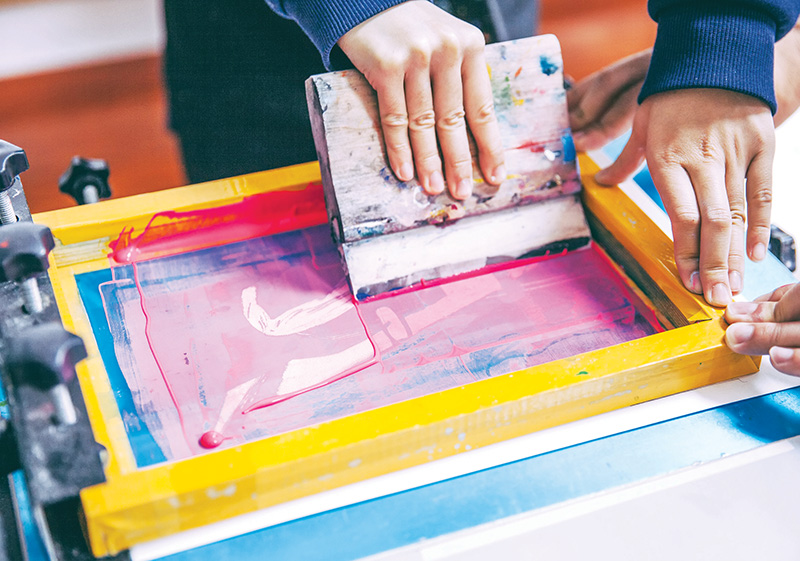
Clothing printing is a printing method wherein the paint is transferred to a medium through a mesh. Textile Screen printing, as it was previously known, is a generic term for all woven fabrics.
The practice of customizing them by printing colorful motifs or patterns on them is very old, most likely dating back to the East. Because it was inappropriate for mass production, this type of printing had almost vanished in the west. However, digital design and printing on fabrics based on individual requests has recently seen a resurgence.
History of Cloth Printing
During the Song Dynasty, clothing printing technology first developed in China. It was later adopted by other Asian nations, such as Japan, and refined employing modern techniques.
Clothing printing was brought to Continental Europe from Asian countries in the late 18th and 19th centuries. Still, it did not gain popularity before silk netting became more accessible for commerce, from the eastern, and after that a viable destination for the technique was established.
Types of Cloth Printing
Stamp Printing:
This procedure is very self-explanatory. A stamp is made, and the cloth would then be imprinted with it. The pattern is sliced through into stamps, which would then be immersed in paint, similar to the print pad tokens we used as a kid. Then the design is transferred from the pad to the cloth with adequate pressure forming a beautiful design.
Transfer Printing:
The use of transfer paper is another popular method of printing. This is a unique material that may be found at stores or craft stores. One may create the pattern into photo paper with anything, even a household printer, and afterward, apply it onto the selected cloth using a regular steam iron.
Screen Printing:
The most prevalent application of silkscreen printing would be in the corporate world. The graphic design is first developed using a stencil, and later polyamide meshes are used for printing the designs. The places that one wants the pattern to be on will be masked out using impervious fabric, so those masked out regions do not absorb any paint.

Dye Sublimation:
This method involves a combination of different approaches to produce the best possible outputs than any other clothing printing technique. Patterns are created on dye sublimation material, which is a type of heat dissipation medium.
The pattern is then printed onto the cloth using the sheets. The paints are firmly bonded to the fibers of the material using both pressure and temperature, leaving the cloth as soft and comfortable as before it was imprinted on.
Conclusion
A customized design imprinted on t-shirts may be far more attractive and successful than a standard photograph or image.
T-shirts with designs are a fantastic way to promote a business. Clothing printing makes it easy to print on whichever type of cloth a person may choose. It eliminates the issue of images fading with washes, making it the easiest way of customizing garments.






More Stories
What Are The Benefits Of Self Storage For Homes And Offices
Unlocking the Potential: MRO ERP Software for Aviation
Finding the Best SEO Experts in San Jose, CA